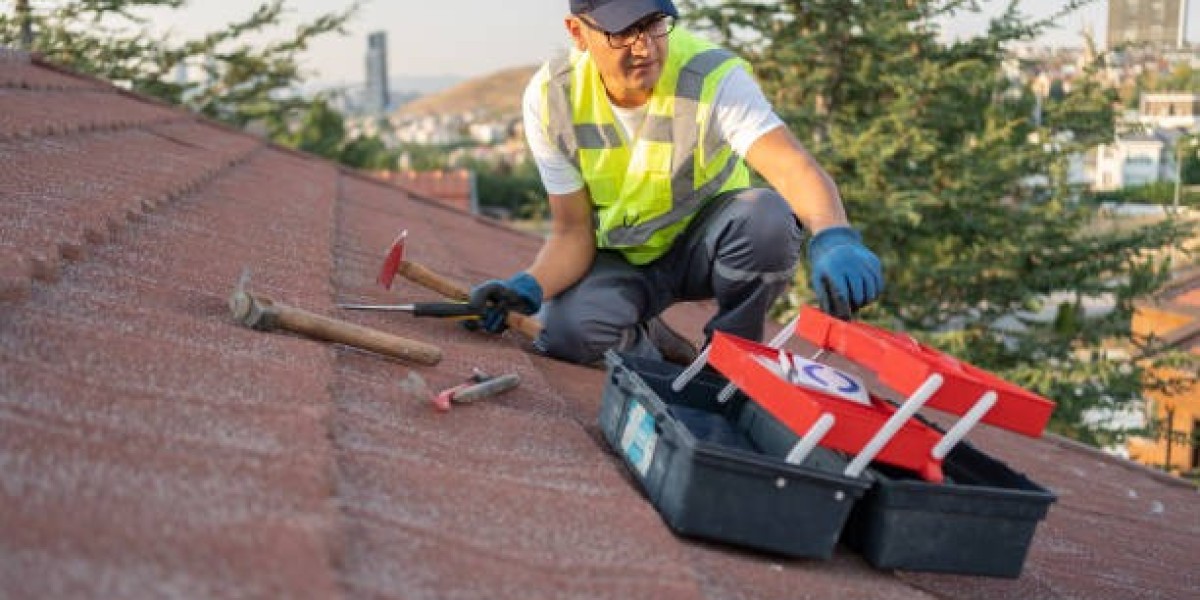Siding is one of the most important components of your home’s exterior. It serves as a protective barrier against the elements, such as rain, wind, snow, and extreme temperatures, while also contributing to the overall aesthetic of your property. However, over time, siding can become damaged due to wear and tear, weather conditions, or accidents. That’s where siding repair services come in. These services ensure your home remains secure, energy-efficient, and visually appealing.
In this article, we’ll discuss what siding repair services entail, the common signs that your siding may need repairs, and the benefits of timely siding repair.
What Are Siding Repair Services?
Siding repair services involve identifying and fixing issues with the exterior siding of your home, whether it be wood, vinyl, fiber cement, aluminum, or other materials. The repair process can range from fixing small cracks or holes to replacing large sections of damaged siding. In some cases, repair services may involve repainting, caulking, or sealing to improve both the appearance and function of the siding.
A professional siding contractor will assess the damage and determine the most appropriate course of action to restore your siding to its original state. Depending on the extent of the damage, repairs may be a temporary solution, or you may need to consider a full siding replacement.
Common Signs Your Siding Needs Repair
Cracks and Holes: One of the most obvious signs that your siding needs repair is the presence of cracks, holes, or gaps. These can be caused by impact from debris, shifting foundation, or natural wear over time. Even small holes can lead to water infiltration, which can result in more serious issues such as mold growth or rot.
Warping or Buckling: If your siding has become warped, buckled, or wavy, this is a sign of moisture damage. Excessive moisture can cause certain types of siding, particularly wood or vinyl, to expand and warp. This can compromise the integrity of the material and make it more susceptible to further damage.
Fading or Peeling Paint: Over time, the paint on your siding may fade or peel due to prolonged exposure to the sun, rain, and temperature fluctuations. While fading paint is largely a cosmetic issue, peeling or chipping paint can expose the underlying material to moisture and cause it to deteriorate. If this happens, repair services may be needed to restore both the paint and the siding’s protective qualities.
Mold or Mildew Growth: Mold and mildew thrive in moist environments, and if you notice discoloration or a musty smell on your siding, it may be a sign of water damage or poor drainage. Left unchecked, mold can spread, causing not only damage to your siding but also health concerns for the occupants of the home.
Increased Energy Bills: Damaged siding can compromise the insulation of your home, leading to drafts and heat loss. If you find that your energy bills are rising unexpectedly, it could be due to gaps, cracks, or broken siding that is allowing air to escape. Timely siding repairs can improve the energy efficiency of your home and reduce utility costs.
Loose or Detached Siding Panels: Siding panels can become loose or even fall off due to extreme weather conditions, improper installation, or old age. If you notice that your siding is no longer securely fastened to your home, it’s important to address the issue right away to prevent further damage to the underlying structure.
Insect Infestation: Insects, such as termites or carpenter ants, can cause significant damage to wooden siding. If you notice signs of insect activity, such as hollow-sounding areas or visible holes, it's crucial to have your siding inspected and repaired promptly to prevent a larger infestation and further structural damage.
The Benefits of Timely Siding Repairs
Improved Curb Appeal: Your siding plays a crucial role in the overall appearance of your home. Damaged or worn-out siding can make your property look unattractive and unkempt. Siding repairs restore the aesthetic appeal of your home, making it look well-maintained and inviting. Whether you’re planning to sell or simply want to enjoy a beautiful home, timely repairs will keep your exterior looking fresh and polished.
Enhanced Protection: Siding serves as the first line of defense against the elements. When it’s damaged, your home becomes more vulnerable to water infiltration, pests, and other environmental threats. Repairing or replacing damaged sections of siding ensures that your home remains well-protected and that the structural integrity of your property is not compromised.
Energy Efficiency: Well-maintained siding helps maintain your home’s insulation by preventing air leaks. Gaps, cracks, and damaged sections allow air to escape or enter your home, causing your HVAC system to work harder and increasing energy consumption. Repairing your siding can help improve your home’s energy efficiency and reduce heating and cooling costs.
Preventing Further Damage: Small issues with siding, such as minor cracks or gaps, can quickly worsen if left unattended. Water can seep into the walls, leading to rotting wood, mold growth, and even structural damage. Timely repairs help prevent these issues from escalating and causing more extensive (and costly) damage to your home.
Increased Home Value: Regular maintenance, including siding repair, can boost the overall value of your home. A well-maintained exterior signals to potential buyers that the home has been cared for and is in good condition. If you’re planning to sell your home, repairing damaged siding can help you get the best possible return on investment.
Types of Siding Materials and Their Repair Needs
Different types of siding materials require different repair methods. Here’s a quick overview of the most common types of siding and the repair services they might need:
Vinyl Siding: Vinyl siding is low-maintenance and resistant to many weather elements. However, it can crack or fade over time. Vinyl siding repairs typically involve replacing damaged panels or fixing cracks with matching materials.
Wood Siding: Wood siding is vulnerable to rot, termites, and weathering. Repairing wood siding may involve replacing rotted sections, sanding and refinishing the surface, or applying sealant to prevent moisture damage.
Fiber Cement Siding: Fiber cement siding is durable but can crack or become damaged by heavy impacts. Repairs for fiber cement siding typically involve replacing broken panels or filling cracks with caulk or a patching compound.
Aluminum Siding: Aluminum siding is prone to dents and scratches, especially in areas with severe weather. Repairing aluminum siding may involve replacing damaged sections or fixing dents through metalworking techniques.
Conclusion
Siding repair services are an essential part of maintaining the exterior of your home. By addressing issues like cracks, holes, warping, and fading in a timely manner, you can protect your home from further damage, enhance its curb appeal, and improve energy efficiency. Whether you need minor repairs or larger replacements, a professional siding repair service can help ensure that your home remains safe, secure, and visually appealing for years to come. Don’t neglect the condition of your siding—investing in repair services now can save you money and trouble down the road.









